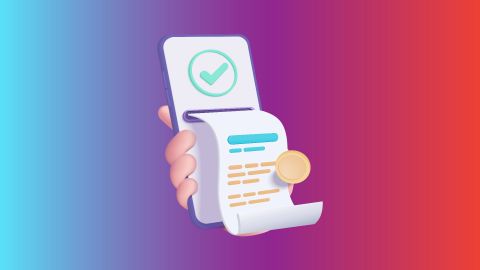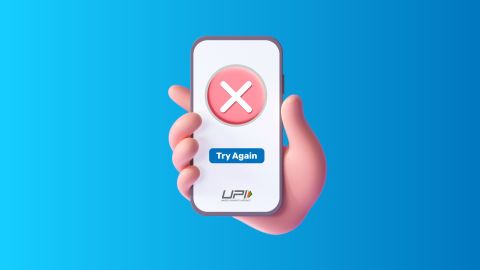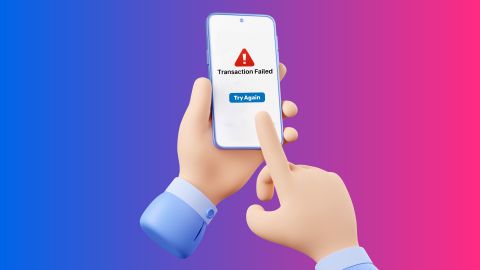Get the full breakdown of single-phase KW meters. Learn how to install, calculate power consumption, and maintain meters effectively for optimal performance in industrial environments.
Single phase KW meter
-
-
Single-phase meters are essential for measuring electricity consumption in residential settings, providing an efficient way to monitor energy use. These meters operate on a simple two-wire system, making installation straightforward and cost-effective. Typically used in homes and small businesses, single-phase meters are designed to handle lower power requirements, ensuring adequate energy supply for everyday appliances like lights, fans, and refrigerators.
Customers can effectively manage their energy consumption and make their electricity bill payment effortlessly through Bajaj Pay, the BBPS platform on Bajaj Finserv.Benefits of installing a single phase meter
- Simplicity: Easy to install and operate, requiring minimal technical expertise.
- Cost-effective: Generally cheaper than three-phase meters in terms of purchase and installation costs.
- Compatibility: Ideal for standard household appliances that operate on single-phase power.
- Efficiency: Provides accurate readings for lower energy consumption needs, helping users manage their electricity bills effectively.
- Space-saving design: Compact size allows for easy placement in various locations within the home.
Steps for single phase meter installation
1. Power down: Ensure all power sources are turned off before starting the installation.
2. Gather tools: Collect necessary tools such as screwdrivers, wire strippers, and safety equipment.
3. Mount the meter: Securely install the meter on a wall or electrical panel according to manufacturer specifications.
4. Connect wires: Attach the live wire to the meter's input terminal and the neutral wire to the neutral terminal.
5. Check connections: Verify all connections are tight and secure to prevent any electrical issues.
6. Power on: Restore power and check the meter display for proper functionality.
7. Test readings: Run a few appliances to ensure the meter accurately records energy consumption.Documentation required for installation
1. Proof of identity: Government-issued ID (e.g., Aadhar card, passport).
2. Address proof: Utility bill or rental agreement showing the installation address.
3. Application form: Completed application form for meter installation from the local electricity board.
4. Technical specifications: Any required technical documents or specifications from the meter manufacturer.
Cost and charges for single phase meter installation
Item Estimated cost (INR) Meter purchase 1,500 - 3,000 Installation charges 500 - 1,500 Wiring and accessories 300 - 800 Total estimated cost 2,300 - 5,300 Safety measures during installation
Proper safety measures should be taken during installation to prevent accidents:
- Wear protective gear: Use gloves and goggles to protect against electrical hazards.
- Ensure proper grounding: Confirm that the electrical system is properly grounded before connecting the meter.
- Avoid wet conditions: Do not install meters in wet or damp areas to prevent short circuits.
- Follow local codes: Adhere to local electrical codes and standards during installation.
Common challenges and solutions
- Incorrect wiring: Double-check connections if the meter does not display readings.
- Power fluctuations: Use surge protectors to safeguard against voltage spikes during installation.
- Meter malfunction: Consult with a licensed electrician if the meter fails to operate correctly after installation.
Selecting the right meter for your home
Choosing the appropriate single-phase meter involves considering several factors:
- Load requirements: Assess your household's total power consumption needs based on appliances used.
- Voltage rating: Ensure the meter is compatible with your local voltage supply (typically 230V).
- Smart features: Consider smart meters that offer real-time monitoring and remote access capabilities.
- Manufacturer reputation: Opt for meters from reputable manufacturers known for reliability and accuracy.
-
Recharge and Pay Bills
Mobile Prepaid
Mobile Postpaid
Broadband Bill Payment
Electricity Bill Payment
Bajaj Finserv App for All Your Financial Needs and Goals
Trusted by 50 million+ customers in India, Bajaj Finserv App is a one-stop solution for all your financial needs and goals.
You can use the Bajaj Finserv App to:
You can use the Bajaj Finserv App to:
- Apply for loans online, such as Instant Personal Loan, Home Loan, Business Loan, Gold Loan, and more.
- Explore and apply for co-branded credit cards online.
- Invest in fixed deposits and mutual funds on the app.
- Choose from multiple insurance for your health, motor and even pocket insurance, from various insurance providers.
- Pay and manage your bills and recharges using the BBPS platform. Use Bajaj Pay and Bajaj Wallet for quick and simple money transfers and transactions.
- Apply for Insta EMI Card and get a pre-approved limit on the app. Explore over 1 million products on the app that can be purchased from a partner store on Easy EMIs.
- Shop from over 100+ brand partners that offer a diverse range of products and services.
- Use specialised tools like EMI calculators, SIP Calculators
- Check your credit score, download loan statements and even get quick customer support—all on the app.
Frequently asked questions
What is a single-phase KW meter used for?
A single-phase KW meter is used to measure the power consumption in a single-phase electrical system, which is commonly found in industrial, commercial, and large residential setups. It helps in tracking the energy used by equipment or machinery, ensuring accurate billing, and enabling efficient energy management.
How do you calculate power usage with a single-phase KW meter?
Power usage in a single-phase system can be calculated using the formula:
P = √single × V × I × PF,
Where:
P = √single × V × I × PF,
Where:
- P = Power in kilowatts
- V = Voltage (in volts)
- I = Current (in amperes)
- PF = Power Factor (efficiency of the system)
What are the common issues with single-phase KW meters?
Common issues include inaccurate readings due to faulty calibration, display malfunctions, phase imbalances, or loose connections. It is important to regularly inspect the meter for proper operation and conduct maintenance to prevent these issues.
How do you install a single-phase KW meter?
Installation involves selecting a proper location, wiring the three-phase lines to the meter’s terminals, ensuring proper grounding, and testing the system for accurate readings. It’s best done by a qualified electrician to ensure safety and compliance.
What are the benefits of using a single-phase KW meter in industrial settings?
Using a single-phase KW meter in industrial settings provides accurate monitoring of high energy consumption, helps in load balancing, detects power factor issues, and enables businesses to optimize energy usage, leading to cost savings and improved efficiency.
Show More
Show Less




